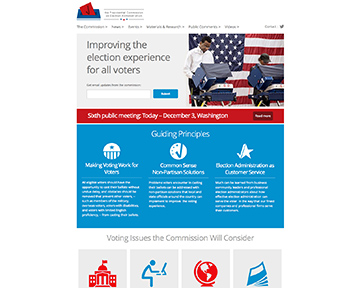| Presidential Commission on Election
Administration's Final Public Meeting |
| Dec. 3, 2013-In its final public
meeting, held at the Reagan Building, the Presidential Commission on
Election Administration,
established by President Barack Obama in a March 28, 2013 Executive Order [PDF], reviewed the work it has
done in the
past six months and heard from MIT political science professor Charles
Stewart III on the findings of a major survey of local election
officials. |
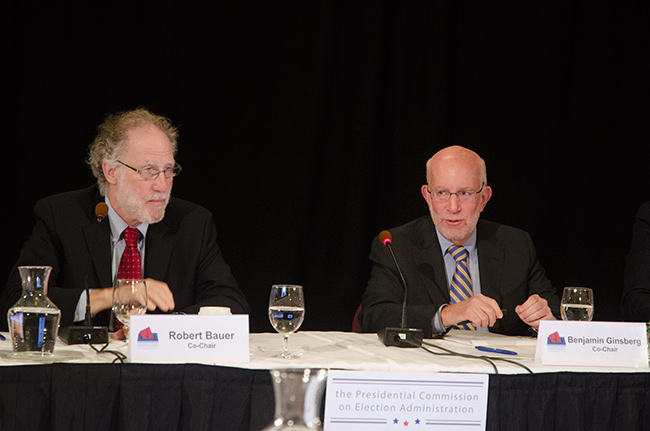 |
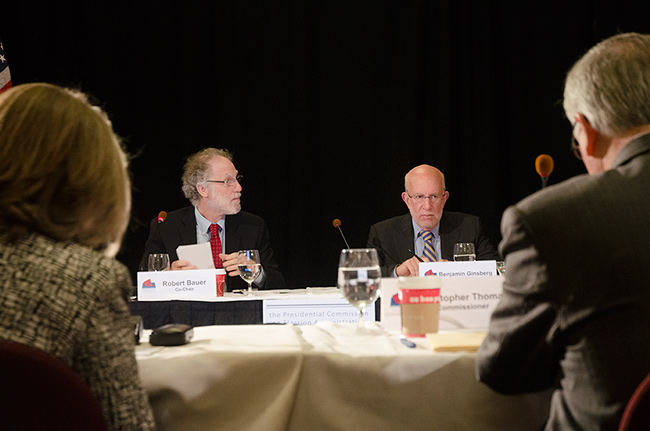 |
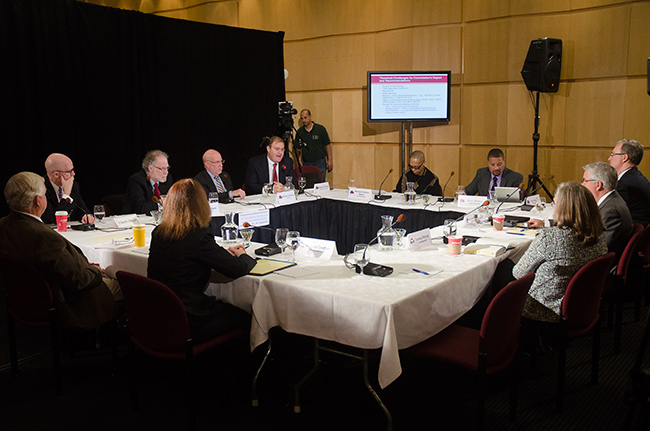 |
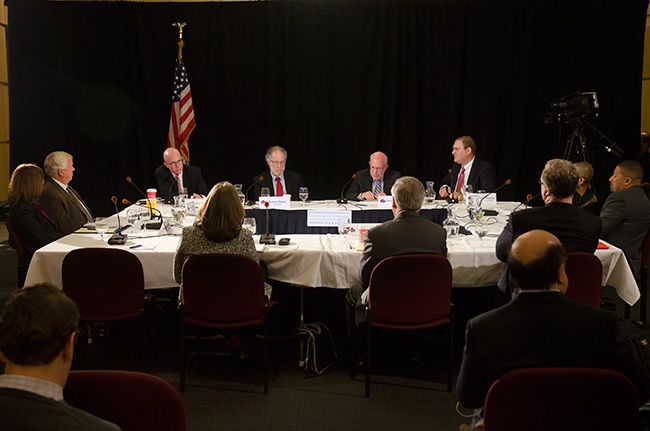 |
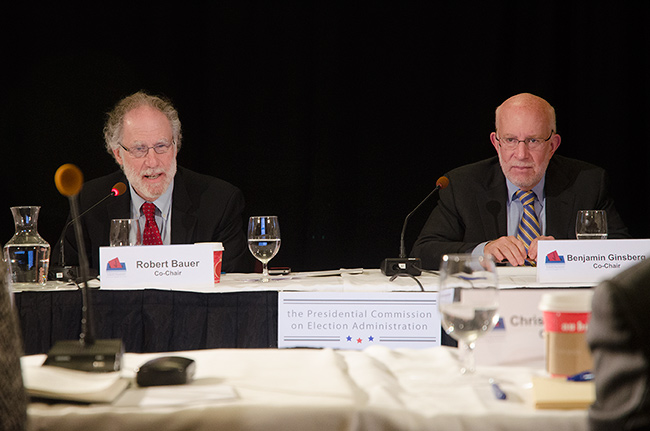 |
| Veteran Democratic
attorney Robert Bauer and veteran Republican attorney Ben Ginsberg
chair
the Commission. |
The ten-member Commission formally launched on May 21. This meeting, held at the Reagan Building, was its sixth public meeting since June 21. Now it must produce a report identifying best practices and making recommendations for presentation to President Obama. Reflecting on the testimony and presentations the Commission has heard, ranging from the very general to the very specific, senior research director Nathaniel Persily said it was clear that "one size does not fit all" and, accordingly, the Commission would be "sensitive to the diversity in particular jurisdictions." That point was reinforced by Professor Stewart's review of the survey of local officials, where he emphasized that larger jurisdictions and smaller jurisdictions often have different concerns. The Commission was formed largely in response to the problem of long lines at some polling places in the 2012 elections. As outlined by the Executive Order, it is considering a gamut of issues including technology, recruitment and training of poll workers, facilities for polling places, and the special concerns and needs of military and overseas voters, the disabled, and absentee voters. Aging voting machines have emerged as a top concern of election officials. Many jurisdictions acquired new equipment in 2003 and 2004 with federal funding assistance following passage of the Help America Vote Act (HAVA) in 2002. Although election officials are "getting by," Persily spoke of worries of a "possible widespread breakdown of voting machines." He said the problem is compounded because the U.S. Election Assistance Commission (EAC), which runs a voting system testing and certification program, is "not functioning." [The EAC has been described as a
"zombie agency." After being caught up in partisan gridlock on Capitol
Hill,
it operated throughout 2012 and to this day with no commissioners and
no executive director. House
Republicans voted to eliminate the EAC, saying it has "fulfilled its
purpose" and is "obsolete and
unnecessary." However, that could change: yesterday the Senate
Rules and
Administration Committee announced that on Dec. 11 it will meet to
consider nominations of two Democrats to be members of the EAC].
Professor Stewart's discussion of the survey of local election officials was the highlight of this meeting. Conducted by Sentis Research, the survey reached out to 7,779 local election officials, of whom 3,191 responded (41 % response rate). The survey led to a number of interesting findings. Stewart estimated that it cost $2.6 billion to run all elections in 2012, and that was mostly for operational spending. He estimated there are 26,300 central election staff in the states and 500,000 who run precinct polling places. He touched on the various ways in which poll workers are distributed among polling places, poll worker training, and, of course the question of long lines. There is no standard definition of what constitutes a long line; the survey used the language "approximately one hour or more." Early in this meeting Persily identified various points at which bottlenecks can develop, for example when people arrive at the polling place and are checked off. Factors contributing to lines include too many people showing up at the same time, overly complex ballots, a need for voter education (so people have figured out how they will vote beforehand) and people showing up at the wrong precinct. Stewart noted that election officials can learn from engineers; queuing theory is taught as part of the engineering programs at a number of universities. In a useful observation after the meeting, Commission member Michele Coleman Mayes reflected that the challenge of elections is that they are complex and infrequent. |
| back > |

